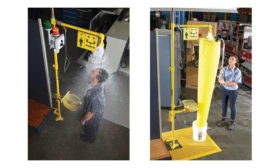Home » Keywords: » emergency action plan
Items Tagged with 'emergency action plan'
ARTICLES
How to execute in an emergency
You need a good plan, training, practice, signage and lighting
February 27, 2019
AEDs on the wall are not an AED program
Roles, maintenance & response times
December 10, 2018
A Spill drill action plan
Engage your responders to maximize speed & containment
November 4, 2018
Planning for emergency evacuations
Cut through the chaos to account for all employees & visitors
May 21, 2018
OSHA to CVS: Get an emergency action plan
“Hazards can vary from location to location”
April 9, 2013
Become a Leader in Safety Culture
Build your knowledge with ISHN, covering key safety, health and industrial hygiene news, products, and trends.
JOIN TODAYCopyright ©2025. All Rights Reserved BNP Media.
Design, CMS, Hosting & Web Development :: ePublishing






